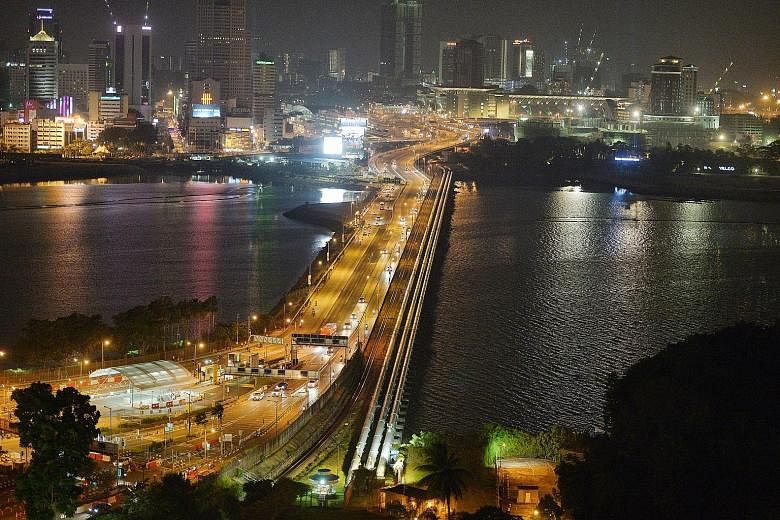Replacing the Causeway is "not the solution" to border congestion, Foreign Minister Vivian Balakrishnan said yesterday.
"Both governments are working to improve congestion at the Causeway and at our borders," he added.
Dr Balakrishnan gave this update in the debate on his ministry's plans. Dr Faishal Ibrahim (Nee Soon GRC) had asked about efforts to boost connectivity between Singapore and Malaysia.
Dr Balakrishnan said the Causeway continues to have sufficient capacity. The conclusion was reached after a joint study by both neighbours, while Singapore had also done its own projections.
His comments come amid renewed calls to consider replacing the Causeway with a bridge. The latest came from the Sultan of Johor last month. In 2001, then Malaysian Prime Minister Mahathir Mohamad had also mooted an arched bridge to let vessels sail under it.
The solution to congestion lies in continually enhancing checkpoint efficiency and operations - but not at the expense of security considerations. This is done through such measures as the use of technology and improving infrastructure, Dr Balakrishnan said.
For example, all motorcycle clearance counters at Singapore land checkpoints will have automated features by the year end. "We have a responsibility to Singaporeans to ensure that we maintain a stringent level of checks," he said. "The Malaysian Government has also had to step up its own security measures."
Meanwhile, progress is also being made on the Kuala Lumpur-Singapore High Speed Rail, which aims to connect both cities in 90 minutes, and the Johor Baru-Singapore Rapid Transit System link.
Dr Balakrishnan, recounting his visit to Sabah last week, yesterday expressed his gratitude to the Malaysian guides and the authorities who helped Singaporeans after an earthquake struck Mount Kinabalu in June last year, killing 18 people.
"The Malaysians' swift, instinctive and spontaneous response at our point of acute need reflects the close ties between our two peoples," he said. "It behoves us as politicians to build on the already strong ties of kinships, friendships and relationships."
The annual Leaders' Retreat will be held in Malaysia this year.
Dr Balakrishnan said it will allow both sides to "take stock of" various bilateral projects. Economic ties also remain robust, he said. Singapore and Malaysia are each other's second largest trading partners.
Related links:
Singapore can't accept that 'might is right'
Staying open, forging ties crucial for survival
Maliki: Be careful not to be drawn into conflicts in Middle East


